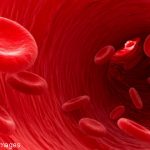 In 2021, the ACR—in concert with the Vasculitis Foundation (VF)—released four new vasculitis guidelines, one each on: 1) anti-neutrophil cytoplasmic antibody (ANCA) associated vasculitis, 2) giant cell arteritis (GCA) and Takayasu arteritis, 3) polyarteritis nodosa and 4) Kawasaki disease.1-3,10 The guideline development process is complex. For the vasculitis guidelines, this process kicked off in June 2017, when the core leadership team formed by the ACR first met in person. The ACR also convened expert and voting panels. Together, the core team and the two panels determined the project’s scope. Members of the literature review team assembled evidence using the most recent nomenclature system for vasculitis, the 2012 Chapel Hill Consensus Conference nomenclature.4 A panel of patients contributed as well. In this series, we discuss the updated recommendations with authors who contributed to each guideline. Read other installments in this series.
In 2021, the ACR—in concert with the Vasculitis Foundation (VF)—released four new vasculitis guidelines, one each on: 1) anti-neutrophil cytoplasmic antibody (ANCA) associated vasculitis, 2) giant cell arteritis (GCA) and Takayasu arteritis, 3) polyarteritis nodosa and 4) Kawasaki disease.1-3,10 The guideline development process is complex. For the vasculitis guidelines, this process kicked off in June 2017, when the core leadership team formed by the ACR first met in person. The ACR also convened expert and voting panels. Together, the core team and the two panels determined the project’s scope. Members of the literature review team assembled evidence using the most recent nomenclature system for vasculitis, the 2012 Chapel Hill Consensus Conference nomenclature.4 A panel of patients contributed as well. In this series, we discuss the updated recommendations with authors who contributed to each guideline. Read other installments in this series.
We continue the series with Andy Abril, MD, a lead author of the ACR/VF guideline for Takayasu arteritis. Dr. Abril is chair of the Division of Rheumatology, Department of Internal Medicine, and chair of the Rheumatology Subspecialty Council, Mayo Clinic Health System, Jacksonville, Fla.
Takayasu arteritis (TAK) is a large vessel vasculitis that typically affects the aorta and the proximal branch vessels. Constitutional symptoms and arthralgias are common, as well as claudication, organ damage due to ischemia, and features related to the vessel involved, such as carotidynia.
Some recommendations made by the guideline are already common practice, such as a conditional recommendation to administer high-dose glucocorticoids (as opposed to low-dose or pulse-dose glucocorticoids) for newly active, severe Takayasu arteritis.
From the guideline—Recommendation: For patients with active TAK, we conditionally recommend the use of other non-glucocorticoid immunosuppressive therapy over tocilizumab as initial therapy.
Q: How do you feel about tumor necrosis factor (TNF) inhibitors vs. tocilizumab vs. other conventional synthetic disease-modifying anti-rheumatic drugs (DMARDs)?
Dr. Abril: For tocilizumab, we looked at two main trials. One was retrospective and showed a remission rate of about 6%; the other was the TAKT trial, a prospective study with a small number of patients that showed a remission rate of about 44%.5,6 The TNF data are a lot more robust in terms of the number of studies and patients. The studies are mainly observational, but in general, they were associated with a remission rate of about 70%.7 This is high compared with non-glucocorticoid, non-biologic DMARDs, such as methotrexate, azathioprine and mycophenolate, which are associated with a remission rate of about 45%.8
We recommend non-glucocorticoid and non-biologic medications and TNF inhibitors over tocilizumab. However, if patients do not respond to, or have a contraindication against, TNF inhibitors, tocilizumab could be a valid alternative. And remember: This particular question yielded a conditional recommendation, meaning there may be situations in which tocilizumab may be the preferred agent.
Q: What considerations led to the recommendation to continue therapy, instead of switching therapy, for patients who have asymptomatic progression? Would you be at all worried about someone being undertreated for asymptomatic progression?
Dr. Abril: That’s a concern, of course. Asymptomatic progression could occur in a few different scenarios. Some patients may have some slowly progressive disease. Others may have stable symptoms due to the combination of stenotic vessels and new collateral vessels. However, it’s the rate of progression that’s important.
For example, let’s say you image a patient’s vessels, and then six months later, you image them again, and it’s a little bit worse, but the patient is symptomatically normal. I would feel comfortable continuing the current treatment plan. But if the vessels demonstrated significant worsening after three months, you might be more inclined to change therapy.
One also needs to consider which vessel is involved. If it’s a critical vessel—a coronary or carotid artery, for example—then you’d be a lot more concerned. The important thing is that when you identify those patients you may not necessarily increase or escalate therapy, but you would definitely need to follow closely. That’s the key here: to follow up.
Q: What were the thoughts of the guideline group, or even in your own practice, regarding what types of imaging to do and how frequently to perform them? The guidelines made a conditional recommendation for immunosuppressive therapy for new lesions without specifying how often or what type of imaging.
Dr. Abril: This was one of the questions that generated a fair amount of discussion. Some of us wanted to give a recommendation based on current clinical practice, while others wanted to be true to the methodology we used to make the other recommendations. There are no solid data regarding which studies should be performed at what intervals, which is the main reason a concrete recommendation was not given.
If you see a patient with early disease, you definitely should image earlier. In my own practice, I may want to image such a patient at three months. In the guideline, I think we say that patients should be imaged at three to six months. Then you want to re-image soon to see if the patient is responding to therapy and to make sure the patient doesn’t have rapidly progressive or critical stenosis.
On the other hand, for a patient who’s had the disease for five years, is stable and off glucocorticoids and doing well, you may want to image once a year or even every other year, depending, again, on which vessels are involved. Of course, if you have a patient who’s had critical coronary or carotid involvement, you may want to image them earlier, even if they’re stable. We didn’t give any specific recommendations because, when we stuck with the methodology, there was really not a whole lot of information in the literature. We wanted recommendations to be more evidence based than expertise based.
Q: The guidelines conditionally recommend not escalating therapy for patients who have acute phase reactant elevation but are clinically quiescent. How would you feel if the inflammatory markers were high or if they remained elevated for a prolonged period of time? Would you think about modifying therapy in such cases?
Dr. Abril: That’s another question that concerns us clinicians all the time. Our discussion focused on how specific the inflammatory markers were for disease activity. In a patient who’s asymptomatic, this should trigger close, or closer, observation. You may consider imaging sooner to ensure the patient doesn’t have active disease that may require escalation of therapy.
This recommendation mainly exists to remind clinicians not to start or increase immunosuppression just because the ESR is elevated. That said, of course, acute phase reactant elevation should raise a red flag, and if the patient has already had severe disease with significant organ involvement, you may not want to risk a serious episode, so the patient’s history will help you decide what to do as well.
Q: Could you talk about the data behind the series of recommendations that pertain to surgical management, and maybe even the instances when you think surgical intervention would be indicated? I think all of us are hesitant to intervene on an inflamed vessel, and medical management or surgical intervention was recommended for ongoing claudication and asymptomatic cervical disease. But the guidelines also favor escalating medical management for worsening limb organ ischemia and for renal vascular hypertension, and I could see that being a little bit more controversial.
Dr. Abril: When you look at the interventional trials that were included in the guideline, they only include patients who have failed medical therapy. Very few studies have been done in patients who were not treated with medical therapy first. Because of that, we recommended medical therapy prior to surgical intervention. A lot of patients experiencing critical stenosis may improve with medical therapy alone.
Some of the studies showed that a lot of the patients who had intervention or surgery when the vessel was actively inflamed did not do as well.9 So that’s also a consideration.
Another consideration is that, in general for renal artery stenosis, regardless of the type of artery stenosis, treatment with anti-hypertensives is preferred initially.
Again, there are some caveats. If you have a patient with critical organ or extremity ischemia, stroke-type symptoms or myocardial ischemia, you may need to intervene immediately.
The guideline recommends either a surgical procedure or a catheter-based procedure in those cases. Ideally, however, such a patient would be treated with high-dose glucocorticoids prior to the procedure to try to control the inflammation.
We also thought it was important to bring the vascular surgeon into discussions to decide the appropriate therapeutic approach.
I think it’s important to keep in mind that all of these are guidelines; they’re supposed to help the clinician make decisions, but they’re not going to replace clinical judgment. Often, the guidelines may not apply to a specific clinical scenario. The idea is to give some tools to clinicians that they can use along with their best possible judgment.
It was definitely a privilege to participate with such a great group of rheumatologists on creating the guideline for Takayasu arteritis, and a wonderful experience personally for me, as somebody who has been interested in vasculitis for many years.
Michael Putman, MD (@EBRheum), is an assistant professor at the Medical College of Wisconsin, Wauwatosa, where he is the associate fellowship program director and the medical director of the vasculitis program.
References
- Chung SA, Langford CA, Maz M, et al. 2021 American College of Rheumatology/Vasculitis Foundation Guideline for the Management of Antineutrophil Cytoplasmic Antibody–Associated Vasculitis. Arthritis Rheumatol. 2021 Aug; 73(8):1366–1383; and Arthritis Care Res (Hoboken). 2021 Aug; 73(8):1088–1105.
- Maz M, Chung SA, Abril A, et al. 2021 American College of Rheumatology/Vasculitis Foundation Guideline for the Management of Giant Cell Arteritis and Takayasu Arteritis. Arthritis Rheumatol. 2021 Aug;73(8):1349–1365; and Arthritis Care Res (Hoboken). 2021 Aug; 73(8):1071–1087.
- Chung SA, Gorelik M, Langford CA, et al. 2021 American College of Rheumatology/Vasculitis Foundation Guideline for the Management of Polyarteritis Nodosa. Arthritis Rheumatol. 2021 Aug; 73(8):1384–1393; and Arthritis Care Res (Hoboken). 2021 Aug; 73(8):1061–1070.
- Jennette JC. Overview of the 2012 revised International Chapel Hill Consensus Conference nomenclature of vasculitides. Clin Exp Nephrol. 2013 Oct;17(5):603–606.
- Mekinian A, Resche-Rigon M, Comarmond C, et al. Efficacy of tocilizumab in Takayasu arteritis: Multicenter retrospective study of 46 patients. J Autoimmun. 2018 Jul; 91:55–60.
- Nakaoka Y, Isobe M, Takei S, et al. Efficacy and safety of tocilizumab in patients with refractory Takayasu arteritis: Results from a randomised, double-blind, placebo-controlled, phase 3 trial in Japan (the TAKT study). Ann Rheum Dis. 2018 Mar; 77(3):348–354.
- Novikov PI, Smitienko IO, Sokolova MV, et al. Certolizumab pegol in the treatment of Takayasu arteritis. Rheumatology (Oxford). 2018 Dec 1; 57(12):2101–2105.
- Aeschlimann FA, Eng SWM, Sheikh S, et al. Childhood Takayasu arteritis: Disease course and response to therapy. Arthritis Res Ther. 2017 Nov 22; 19(1):255.
- Zheng T, Zhu S, Ou J-F, et al. Treatment with corticosteroid and/or immunosuppressive agents before surgery can effectively improve the surgical outcome in patients with Takayasu’s arteritis. J Invest Surg. 2019 Apr; 32(3):220–227.
- Gorelik M, Chung SA, Ardalan K, et al. 2021 American College of Rheumatology/Vasculitis Foundation Guideline for the Management of Kawasaki Disease. Arthritis Rheumatol. 2022 Apr; 74(4):586–596; and Arthritis Care Res (Hoboken). 2022 Apr;74(4):538–548.



